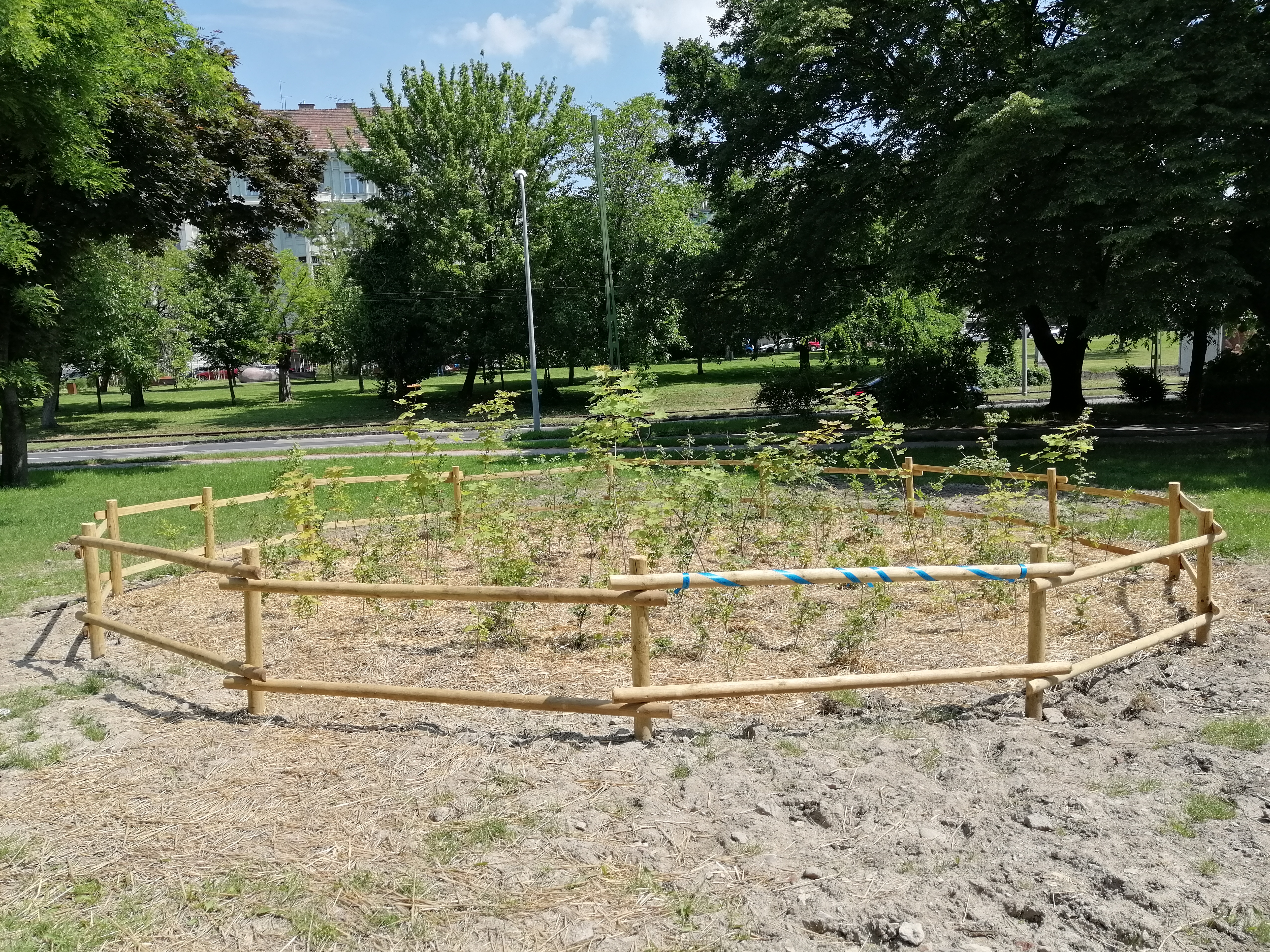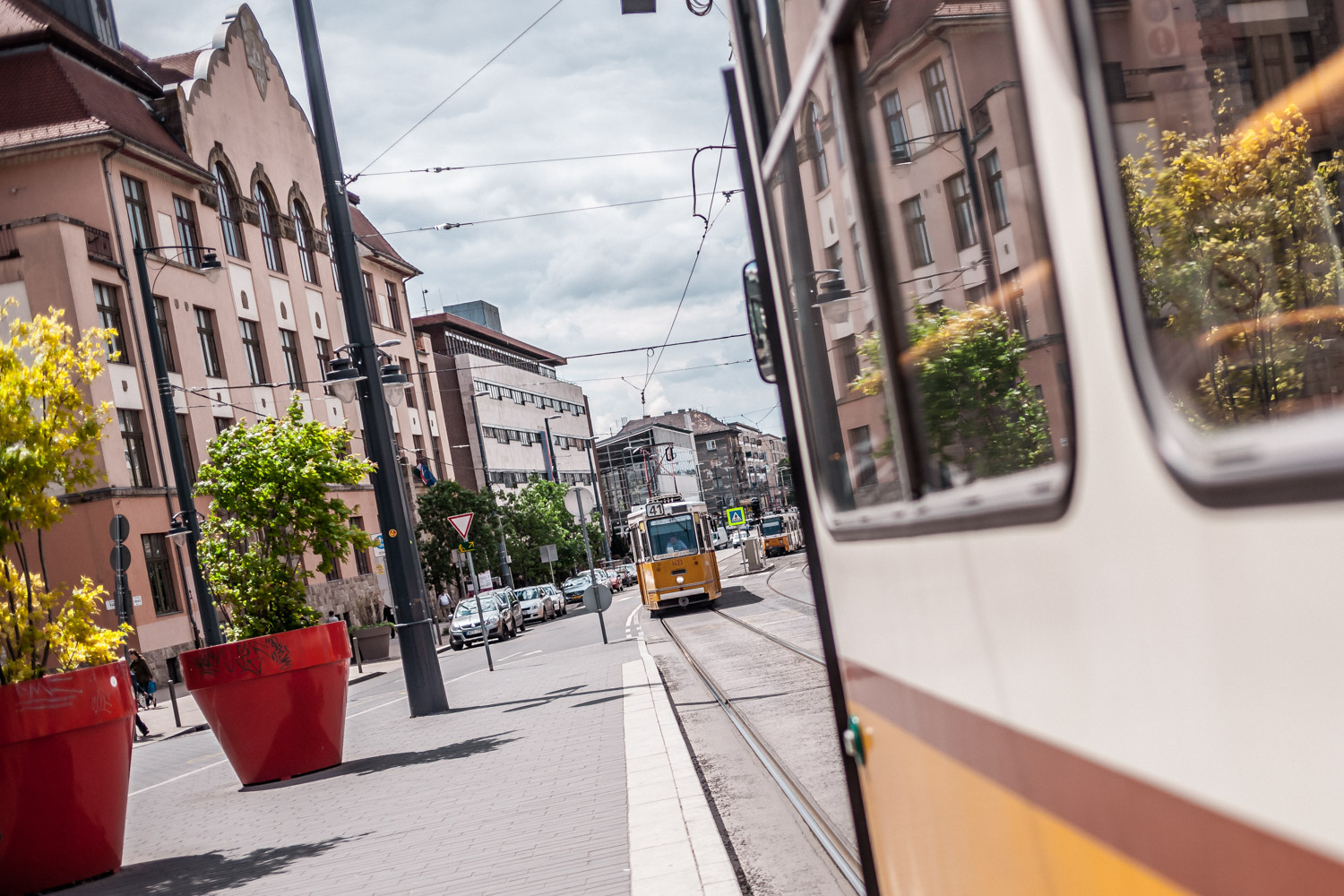Now 93, ecologist Akira Miyawaki gained international recognition by developing a method for restoring degraded land with natural vegetation.

The first step is to look for a suitable, preferably urban, land, which
can be as modest in size as the one in Tabán. Then comes the mapping out of what
vegetation would be like there if there had been no human activity, and the
potential for growth.
From this, experts choose as many native
trees and shrubs as possible and, after preparing the soil, plant three
examples per square metre. The selection should be as varied as possible, in a
random pattern. After watering, they cover the soil with straw – and that’s it.
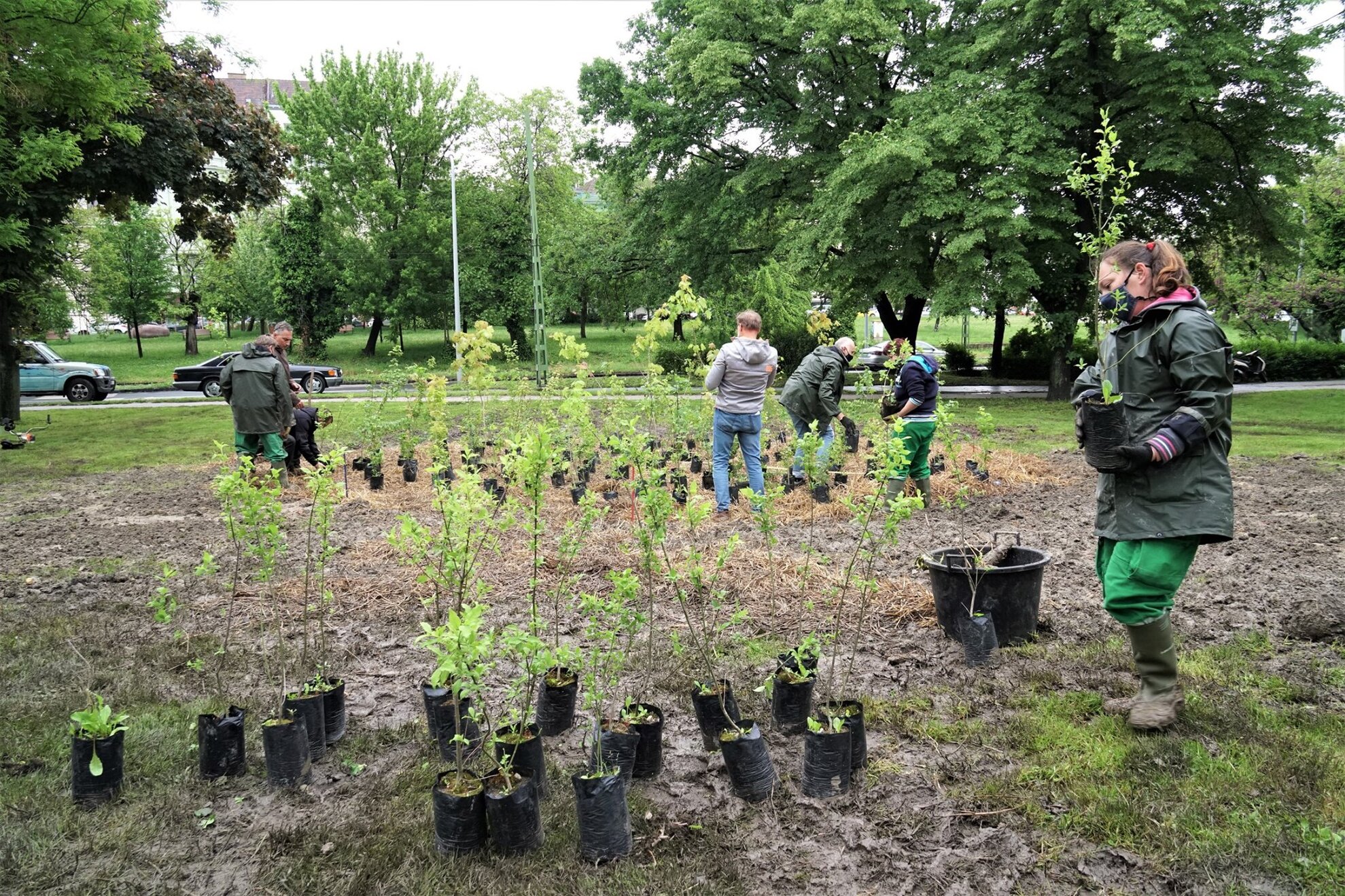
Although Miyawaki forests develop on their own after a while, they still
need to be looked after for up to three years after the first planting, with the right care and irrigation. The rapid growth will be visible – small trees can reach
up to a metre in height within a year.
Pretty soon, the system will be up and
running, and from then on biodiversity works by itself, and locals can enjoy the benefits of fresher air, less dust and more birdsong.
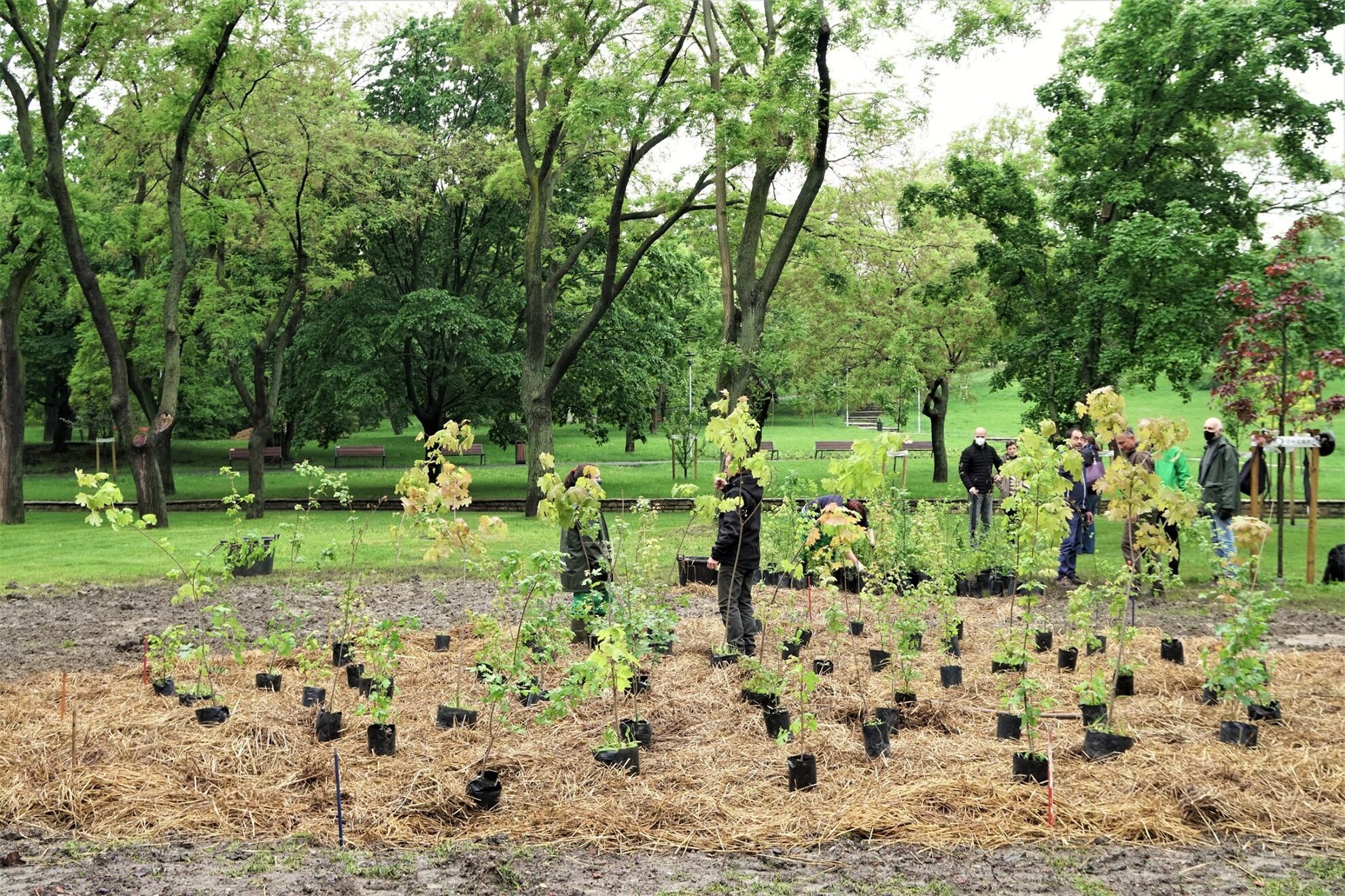
Each of the species planted in the Tabán is an indigenous to the Buda
hills, so it will imitate any calcareous deciduous forest. The rapid growth is
due to the fact that it builds on young plants competing for light. Seedlings
planted relatively close to each other try to grow as fast as possible to
overtake their rivals.
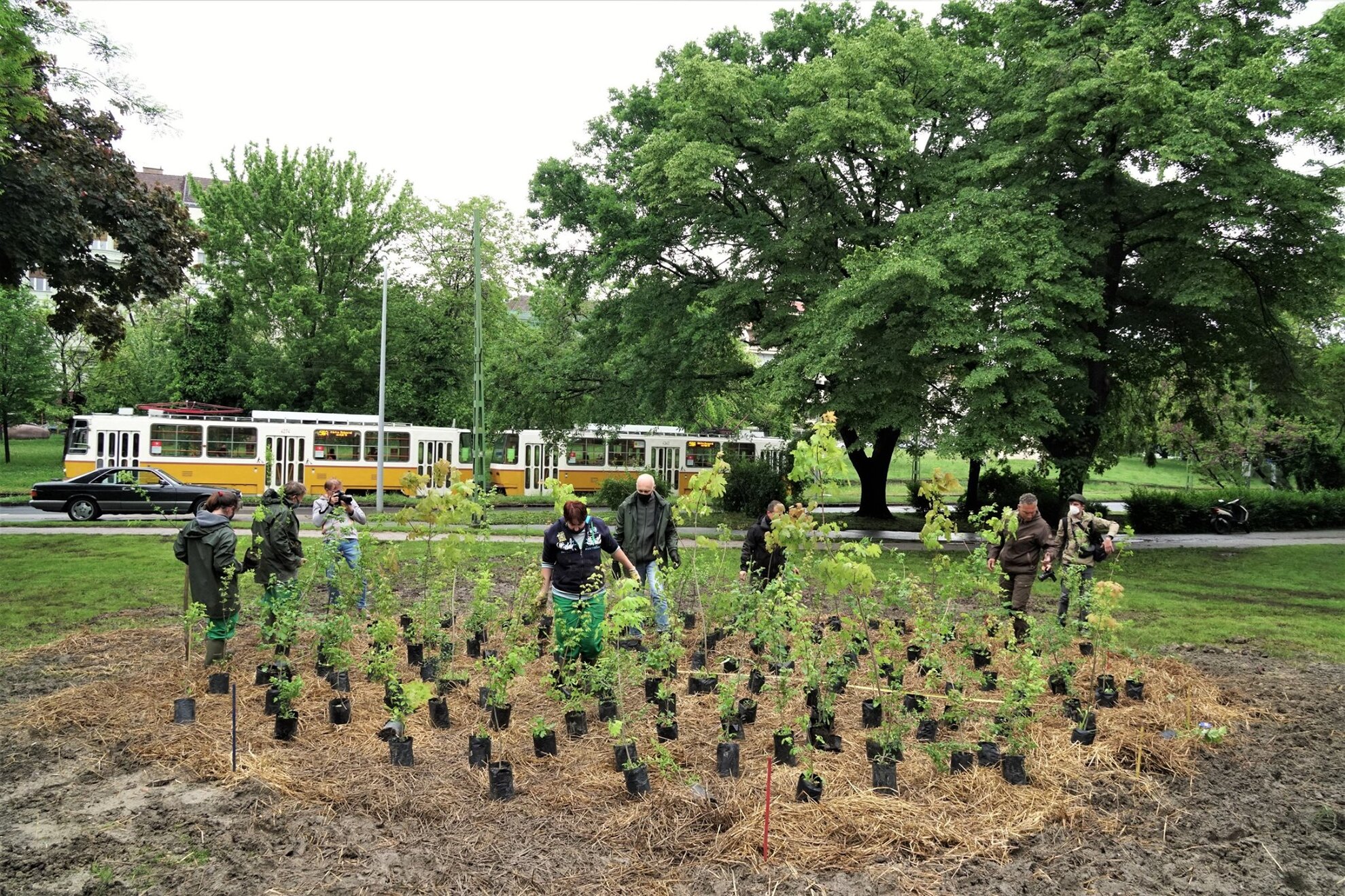
This is why a Miyawaki forest does not need decades to flourish, but a few years. That is enough for the small trees to reach the height and development that make any cluster look like a forest, however modest it may appear now.
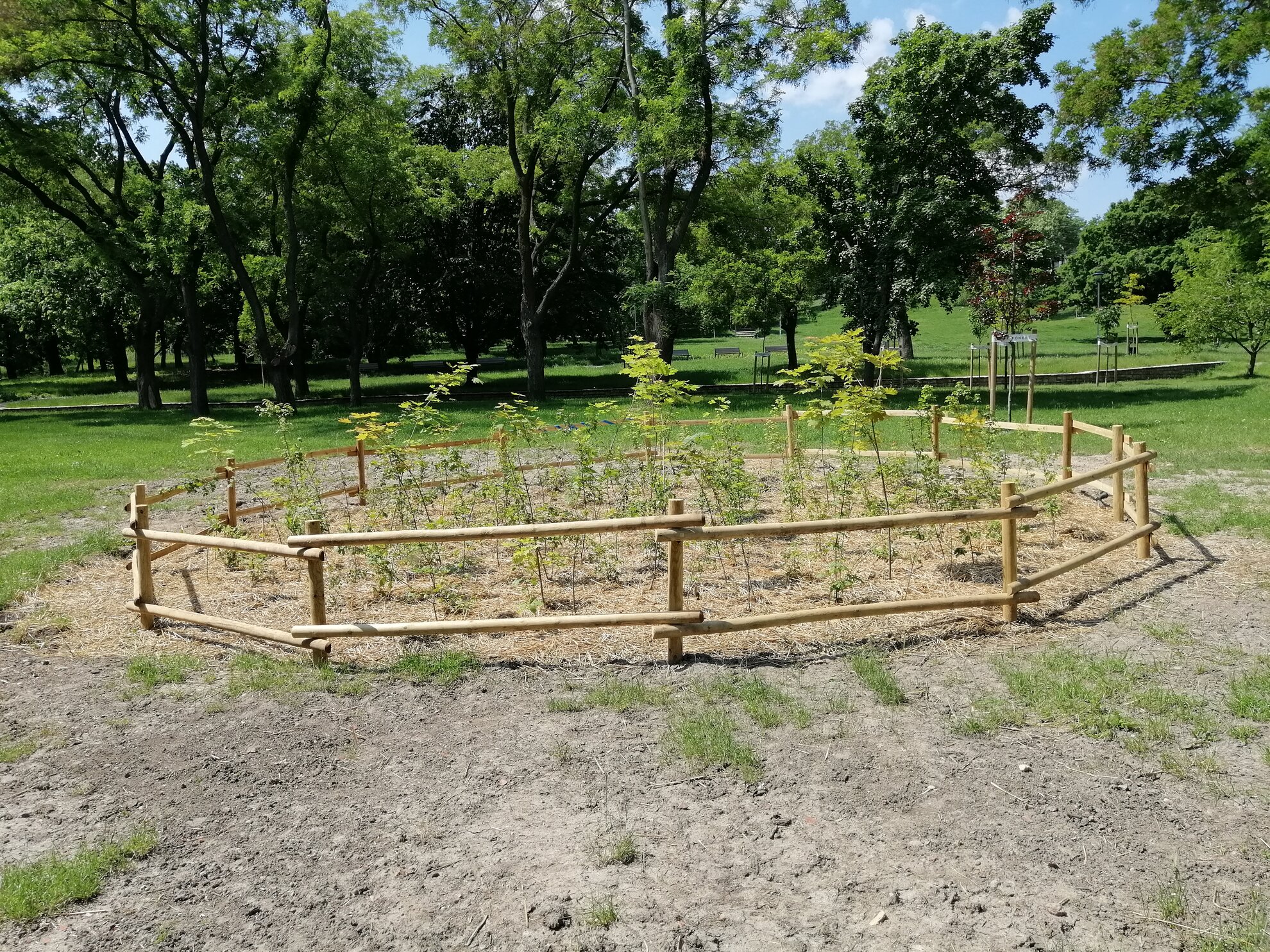
A total of 120 plants was bedded on the Tabán site: wild service tree, hornbeam, wild pear, spreading elm, sessile oak, European spindle, common hawthorn, and numerous field and Norway maples.
